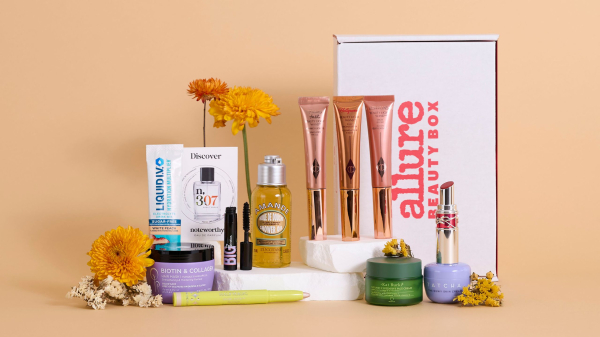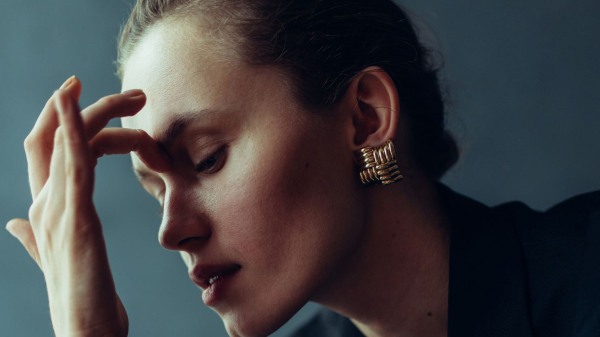 Photo: Getty ImagesSave this storySave this story
Photo: Getty ImagesSave this storySave this story
Part of being a good storyteller is knowing which stories should be told and which might be better kept in the drafts. KeyTV’s Southern Fried Rice sadly falls into the latter category.
The limited web series, which lives on Keke Palmer’s YouTube network, was met with swift backlash after its debut for its premise, characters, and writing. The story follows Koko, a South Korean American woman adopted and raised by Black American parents, who is—as KeyTV describes it—on a journey to “figure out who [she is] beyond the comfort of what’s familiar.” The perfect place to do that, apparently? Wright University, a fictional HBCU located in her home state of Georgia.
After watching the series myself, I can’t fault anyone for having a negative reaction. There are so many things I have to question about it. Most glaring is the choice to center a non-Black woman in an all-Black environment and, as an added bonus, to outfit her in some of the same aesthetics for which Black women are all too often vilified (you know, like how cornrows were deemed “ghetto” until Kim Kardashian wore them). The premise itself is tone-deaf, and it’s not helped by the way this show leans into the appropriation of Black beauty rather than questioning and challenging it.
This misstep is something one might expect from a team of non-Black writers, but the show was, in fact, written by a Black woman, Nakia Stephens (who has a multi-project development deal with KeyTV). In an Instagram post defending her work, she wrote, “Southern Fried Rice is meant to create dialogue because representation isn’t one-dimensional.” Stephens, an HBCU graduate herself, said the show was inspired by the experiences of her non-Black college friends. Executive producer Keke Palmer also hopped onto social media to address the controversy, invoking KeyTV’s Black creatives in the show’s defense. “It’s imperative people of color have jobs outside of just being the talent or the player on the team,” she captioned a video posted on October 23. “It’s my mission…to help fund and support the creators of color behind the scenes, giving them a chance to tell their own story.”
Supporting Black creatives and inspiring conversations about representation are missions we can all get behind, but Southern Fried Rice missed those marks in several ways—especially in the way Koko is styled. Koko wears what appears to be a loose, curly perm with a wet finish. On her neck always lie a few stacked gold chains, including two nameplate-style necklaces. Doorknocker earrings. Large gold hoops. A satin bonnet at bedtime. For Halloween, intricately slicked baby hairs…with a ninja-style outfit.
These intentional costume (heavy emphasis on “costume”) choices are meant to serve as a constant and arguably unnecessary reminder that Koko has Black adoptive parents, but that reminder is more like a hit to the head than a tap on the shoulder. And as a result, the styling team missed out on what could have been some intriguing storytelling moments. Instead of nameplate necklaces, for instance, she could have worn a piece of traditional Korean jewelry given to her by her birth parents to show even a marginal connection to her original culture (which, strangely, she never attempts to explore on her journey to “find herself”).
The way Koko is received for her affectation is part of what’s frustrating to watch, too. Koko has not one but two suitors (both Black men) in the show, one of whom courts her simply because she is Asian and he wants to “collect” different races of women like infinity stones. When Koko’s other suitor—who seems to genuinely care for her—tries to make her aware of this, she’s more bothered by him than the fact that she’s being pursued for her race’s sake.
The whole situation made me uncomfortable because, for one, it plays into the fetishization of Asian women, which may not affect me personally but is something I can sympathize with, being part of another minority group that is also fetishized, albeit in a different way. Secondly, we have a Black male character pedestalizing a non-Black woman who styles herself in the Black aesthetic. It happens enough IRL that it’s become a hot topic within the Black community, but in my opinion, the show didn’t spend enough time or broach it with enough nuance to make a real statement about it.
Although the team behind Southern Fried Rice insists they’re aiming to start dialogue with these choices, there’s only one character in the show that actually challenges Koko—and the viewer—to rethink the way she shows up in Black culture… but she’s positioned more as a villain than a voice of reason. Koko’s roommate, Joy, a larger, dark-skinned Black woman with a more Afrocentric aesthetic, consistently reminds Koko (heroically, in my opinion) that no matter her upbringing, she is still an Asian woman who will always be protected, defended, and prioritized within American culture—and Black culture—over monoracial Black women.
"The premise itself is tone-deaf, and it’s not helped by the way this show leans into the appropriation of Black beauty rather than questioning and challenging it."
Joy is passionate in her protection of Black culture and openly calls out Koko in front of her peers while playing a competitive card game about Black culture at a party. “She’s just another culture vulture,” Joy says. “Matter of fact, let’s all clap it up for the culture vulture for studying her negro Cliff’s Notes before coming here… you can’t earn Blackness.” Koko understandably gets defensive. “Obviously, I’m not Black, but my family is. So I don’t have to study Black culture. ‘Cause I lived it.” Koko storms off and spends the rest of the evening moping about the interaction. One character calls Joy’s reaction “weird” and suggests she needs a “cleanse.”
At one point in the show, Koko even proclaims that she experiences the “same struggle” as the Black people she grew up around. Joy, once again, has to remind her that no matter Koko’s proximity to Black people or her knowledge of Black culture, she’s still propped up as a “model minority” because she’s Asian, something she needs to contend with if she wants to be a true ally. To Joy’s point, as unsavory as the model minority trope is, it does afford people who look like her a social edge over Black folks. Koko responds with a nod and reflective stare into the distance.
If you ask me, the treatment of Joy just perpetuates the angry Black woman trope, which has been done over and over and over again. Joy’s suspicion of Koko is valid. Her feelings are brushed off as a bad attitude by others, and the fact that no one even tries to consider her point of view suggests to me that the series is more concerned with defending “acceptable” forms of appropriation rather than actually starting a conversation about what’s acceptable to begin with.
Later on in the show, Koko is finally forced to really confront her privilege for the first time (thanks again to Joy), and we see that reflected when, in the series finale, Koko takes the lead in dealing with a police officer when she and her friends are approached (some real after-school-special type stuff). But I found it difficult to believe that Koko took this long to get with the program. Black parents are keenly aware of the social implications of existing inside and outside of Blackness. Did her parents not once explain that she might be treated differently by other members of her Black family? Did Koko never have a situation growing up where she was? Why does she seem so clueless, at her big age of 18, about things every other Black child understands by middle school?
Clearly, Southern Fried Rice’s issues go far beyond hair and accessories, and the fix should have started in the writer’s room. If you’re going to create a story about life at an HBCU and center a non-Black transracial adoptee, the least you could do is have someone who’s actually lived that experience pen the story. While the series would likely still be controversial, starting with that baseline of authenticity and care might have been enough to save it.













Leave a Reply